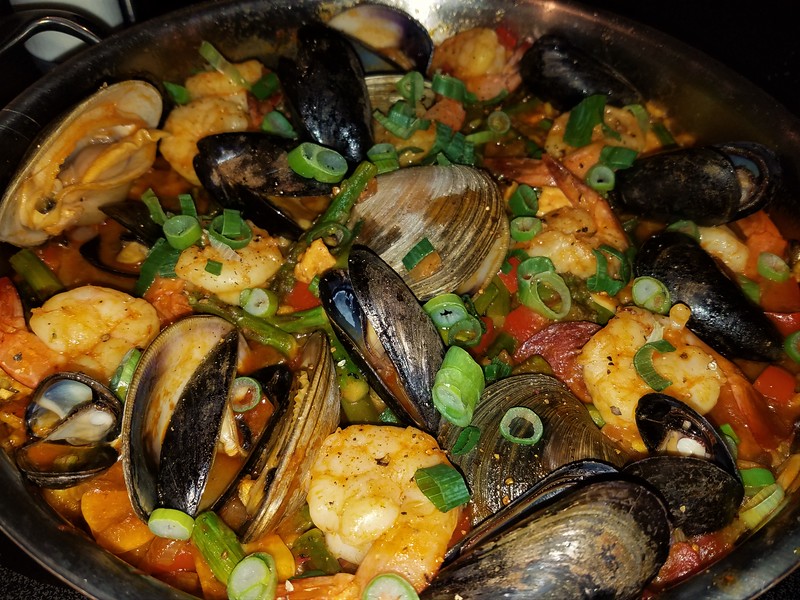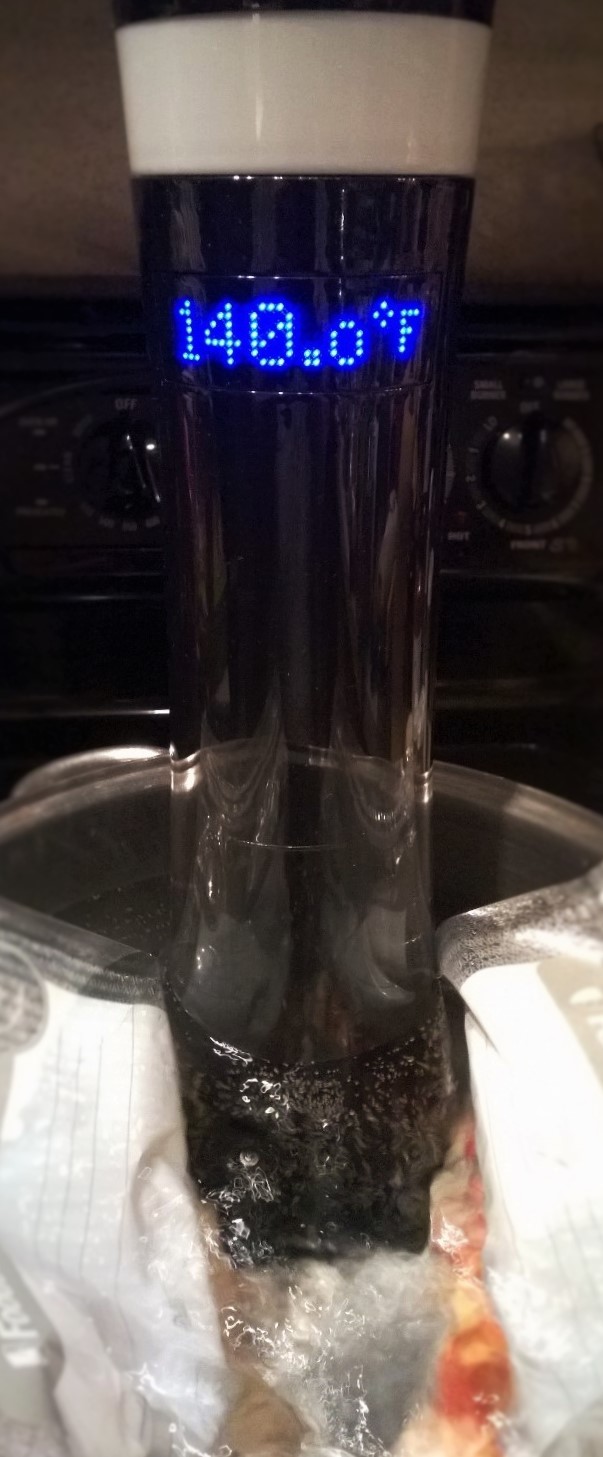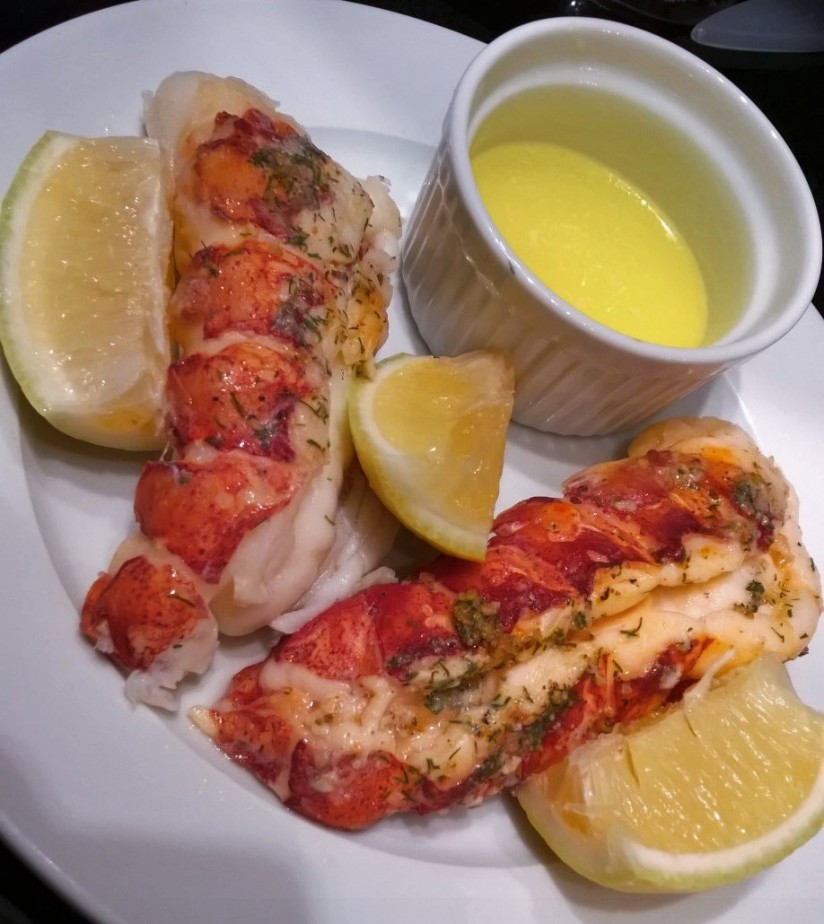I enjoyed my first Paella Valenciana at Miro Spanish Grille in Charlotte a few months after they first opened. Thinking back on the experience, I was definitely new to traditional Spanish cuisine. I remember wondering why the rice was crusted on the bottom of my paella, but luckily I did not say anything. I now know the delicious crust is known as the socarrat, and is a sign of well-cooked paella. It is considered a delicacy.
Paella originated in Valencia, a fertile rice-growing region along the eastern coast of Spain. The word paella stems from the Latin word patella, which means ‘pan’, and refers to the type of pan used to cook the rice. The paellera is a wide, shallow pan with handles on opposite sides. The flat, round shape of the paella pan allows the rice to cook evenly without trapping too much moisture inside the grains. If you don’t have a paella pan, you can use a large heavy skillet, at least 12 inches in diameter. I used a copper core All-Clad pan; solid, heavy bottom that holds the heat extremely well.
There are endless variations on paella using a variety of poultry, seafood, meats, and vegetables; use what you enjoy in it. Today I am using shrimp, clams, mussels, chorizo, chicken, and asparagus. All of my seafood came from Catch On Seafood – a neat little store in Plaza Midwood. In all paellas there are three basic ingredients: stock, olive oil, and the real star of the dish – the rice.

Bomba rice is considered the best strain of Spanish short-grain rice for paella. Bomba is unique for its ability to absorb three times its volume in liquid without turning mushy. The more flavorful the liquid, the more flavor-packed the cooked grain. The difference in the absorption rate is significant enough that if you are using Bomba rice, allow 3 cups of liquid for every cup of rice. Italian Arborio is often suggested as a substitution, some believe it is too creamy. This will be my test today, as I was unable to find Bomba rice after visiting three stores! Arborio it is for my first go at paella.
NOTE: Bomba rice is available at La Tienda and Amazon for mail order.

For this dish, it’s helpful to have everything ready before you start cooking. Keep the seafood and the meat in the refrigerator until just ready to cook. Do all your chopping, and get your stocks and rice measured out. It’s going to look like a lot of ingredients, but it goes fast and you will not be disappointed. Mine came out excellent! I have some Bomba rice on order and will post a follow up in a couple of weeks.

- 1.5 cups Italian Arborio rice
- 3 cups stock. A mix of stock is preferred, rather than just one type; today I used 1 cup each of clam juice, Classic Seafood Stock, and Roasted Vegetable Demi-Glace.
- 1 cup dried Spanish chorizo (sliced into ¼ inch rounds)
- 1/2 lb boneless skinless chicken breast, large dice
- 1/2 lb peeled and deveined shrimp
- 1 dozen mussels
- 6 count middleneck clams
- Spanish Extra Virgin Olive Oil, I used Hojiblanca from Pour Olive
- ½ cup Red pepper, small dice
- 1 small Spanish red onion, small dice
- ¼ cup tomato paste
- 3 cloves of garlic, very thinly sliced (you can also dice, but I like the paper thin slices)
- 20 threads Spanish saffron. I used a generous pinch powdered Spanish saffron from The Spice House.
- 1 bunch of scallions sliced thin, keeping the green tops and the white bottoms separate
- 1 cup Asparagus, bite size cut
- Salt and fresh ground black pepper
Let your paella pan heat for a bit on a large burner at medium-high. And add a few tablespoons of olive oil, and swirl to coat the pan. Make sure that the entire bottom of the pan is nicely coated with oil. Add the chorizo first, and let it brown on both sides. Add the red pepper, onion, scallion whites, and garlic; sauté on medium heat for five minutes.

Move the vegetables to the side of the pan, and add the tomato paste to the other size. Caramelize the paste for a couple minutes, and then mix it into the vegetables. First round of seasoning – add salt, pepper, and the saffron to the mix and continue cooking for a few more minutes.
Add chicken and then toss with other ingredients; and sauté for two more minutes. Add the rice by sprinkling it over the top of everything.
Add the stock(s) and turn the heat to high. From this point on, DO NOT stir the paella. Stirring a paella makes it gummy. Twist and shake your pan around a bit so the rice starts to settle through to the bottom. Turn the heat to high and when the stock is boiling, add the clams. Turn back down to medium-high heat and continue to boil for another 8-10 minutes.
Watch the clams, when they open if they take on rice, gently empty the rice back out and move them to the side. Shift the pan around on the burner periodically to ensure even cooking on the bottom.
When the clams have opened, add the asparagus, and then scatter the mussels and shrimp on top of the paella. Turn the heat down to medium. You can shake the pan a bit again, but remember – no stirring!

When the mussels are open and the shrimp is cooked, check the bottom of the paella for the socarrat (crust). If the paella does not have a crust, simply turn up the heat and cook until it does. Once the crust is formed, garnish the paella with the scallion tops, freshly ground pepper, and a healthy drizzle of olive oil.

Let the paella sit for ten minutes, uncovered, before serving. And oh yeah – that crust? Dark brown, slightly crispy and delicious!! 🙂














